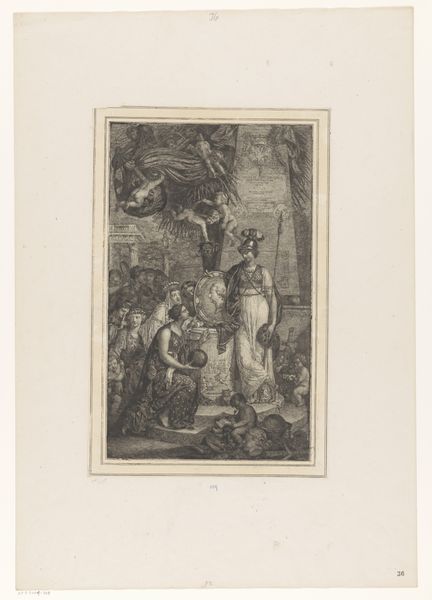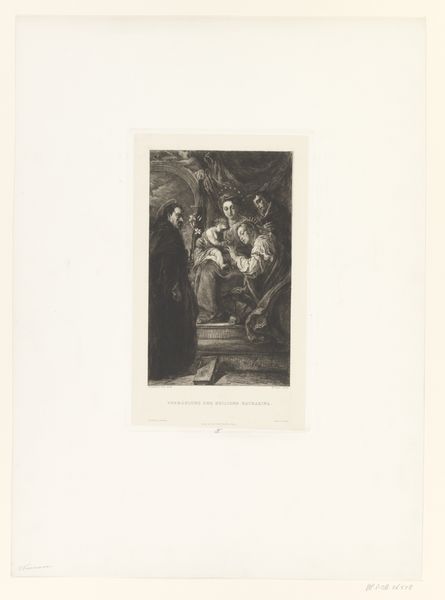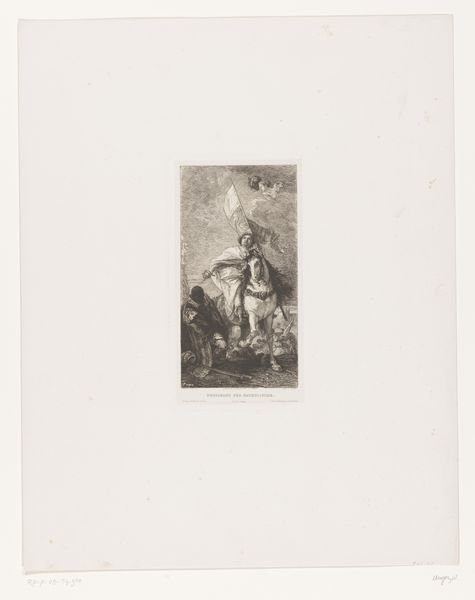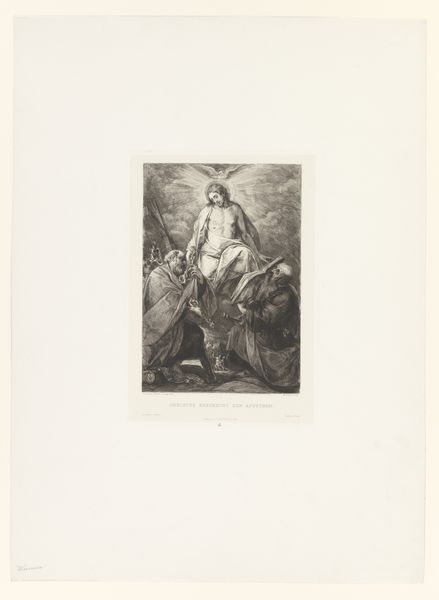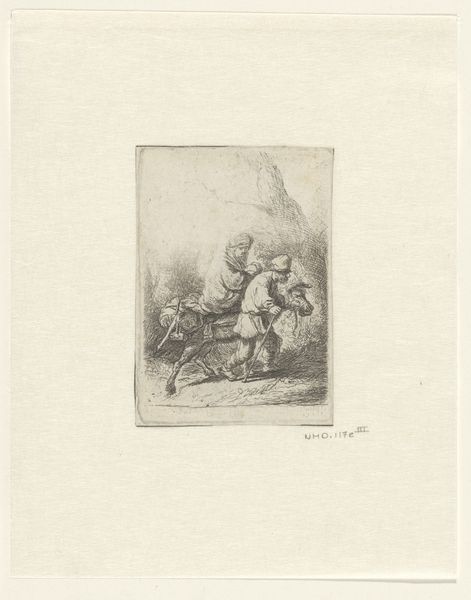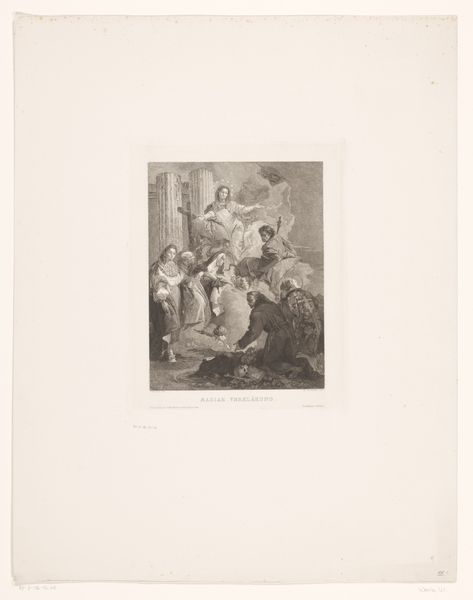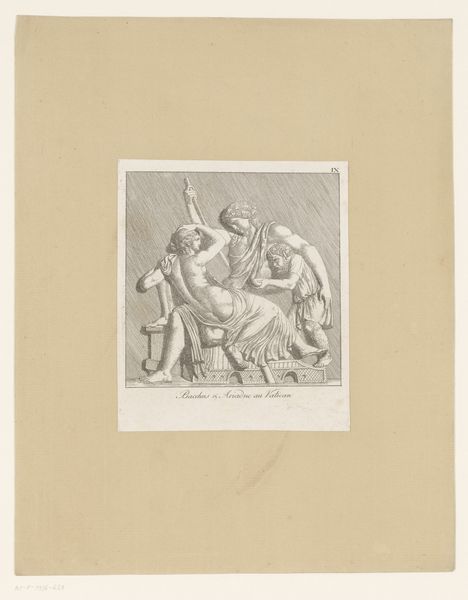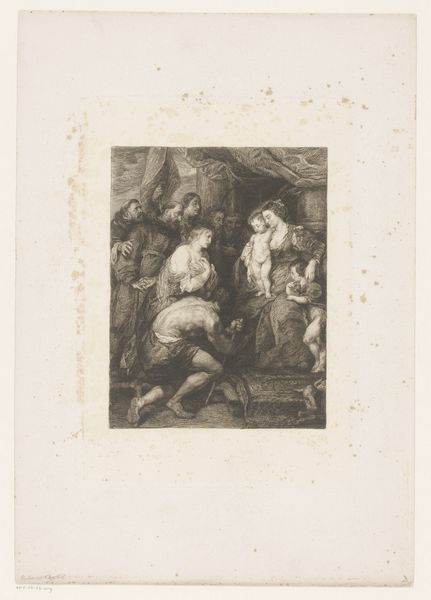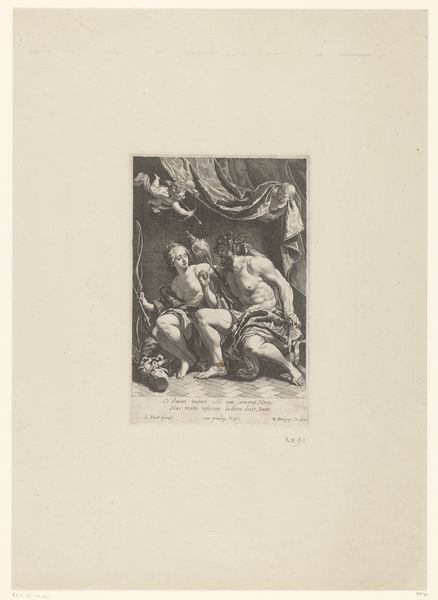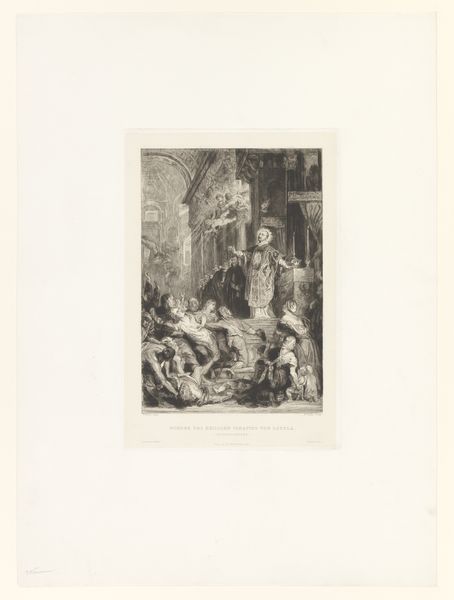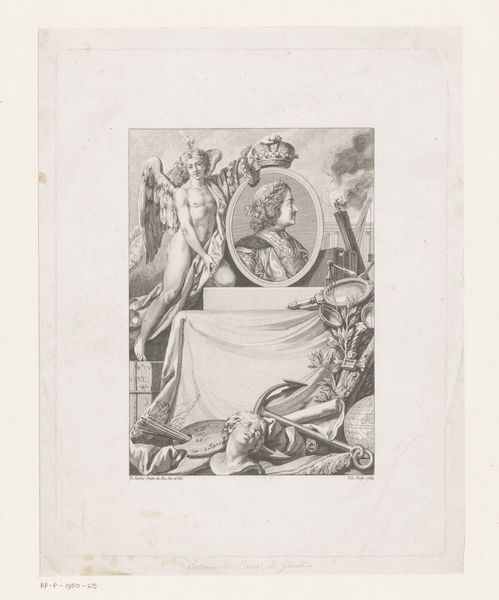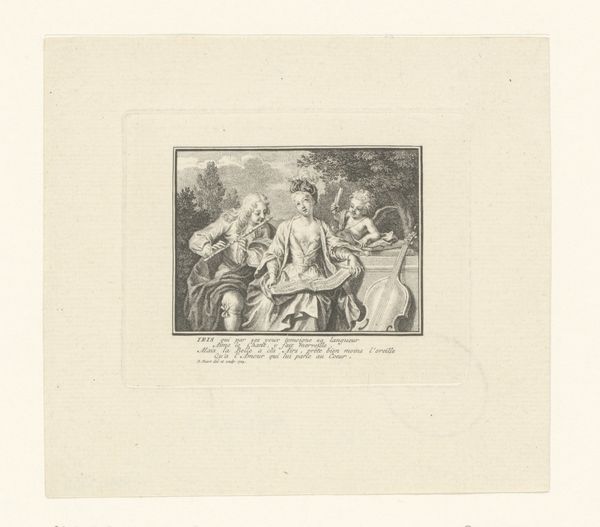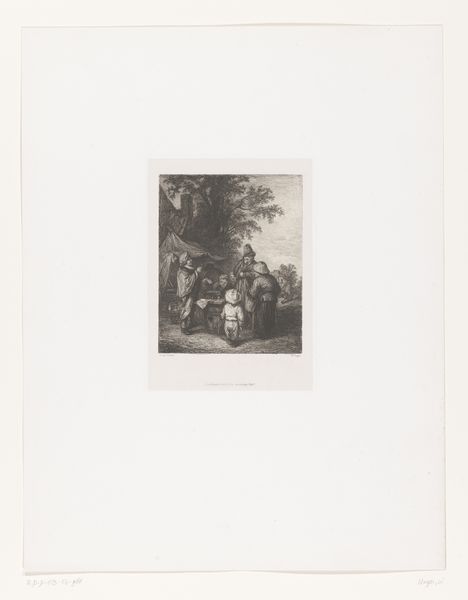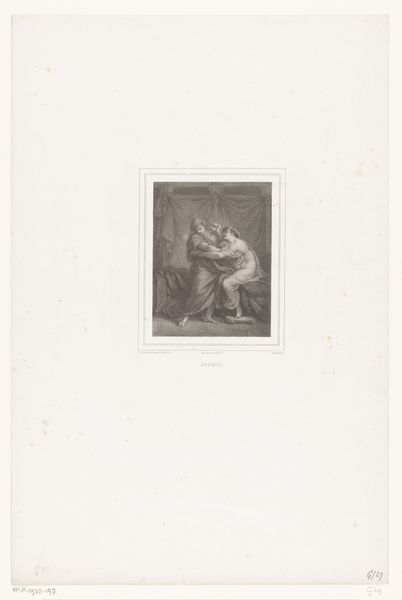
print, engraving
#
16_19th-century
# print
#
old engraving style
#
genre-painting
#
history-painting
#
academic-art
#
engraving
Dimensions: height 300 mm, width 219 mm
Copyright: Rijks Museum: Open Domain
This is William Unger's engraving, ‘Doop van Christus,’ or ‘Baptism of Christ’. Engraving is a printmaking technique using metal, usually copper. A design is cut into a plate with a tool called a burin. The incised lines hold ink, and when the plate is pressed to paper, the image is transferred. The result is characterized by crisp, precise lines, lending itself to detailed, controlled imagery. Unger was renowned for his skill in translating paintings into engravings. Here, the texture and weight of the lines create a tonal range that mimics the look of a painting. Look closely, and you can see how Unger uses varying densities of lines to create shadow and form. Engraving demands intense concentration, patience, and specialized skill developed over years of apprenticeship. This labor-intensive process reflects a pre-industrial emphasis on craft and skill, but the resulting prints could be widely distributed, making them accessible to a broad audience. Considering the materials, the making, and its historical context allows us to appreciate the artistry and cultural significance inherent in this print.
Comments
No comments
Be the first to comment and join the conversation on the ultimate creative platform.
